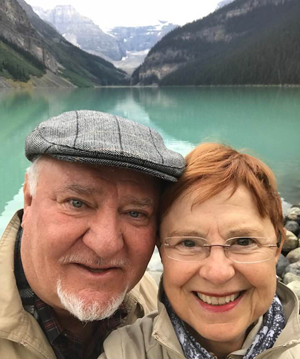There’s a lot about life settlements (LS) people don’t know and/or understand. They are complex processes that require an expert who is both experienced and patient.This is the real-life story of a $16 million Guaranteed Universal Life (GUL) survivorship insurance policy owned by a couple’s four kids whom we helped get a $6 million life settlement that enabled them to save their financial future. Since most people aren’t familiar with life settlements, I’ll begin with what a LS is: the sale of a policy that's no longer needed or wanted, or affordable for the person(s) paying the premiums. The policy owner gets to stop paying premiums and gets cash generated by the policy’s sale, and the buyer receives the death benefit upon the insured’s death. If you think a LS is an option for one of your clients, please check out these requirements:
- Insureds must have a life expectancy of less than 10 years (5 years is most attractive to LS buyers)
- Minimum $250,000 face amount
- UL and convertible Term policies from A or A+ rated insurance companies are most attractive
For the record:
- Life settlements (and most life insurance policies) this size are not the norm. So this case study is both interesting and unusual in so many ways.
- LLIS does not recommend buying a life insurance policy with the intent to sell it as a LS. Nor does LLIS recommend buying a life insurance policy with premium financing.

- GUL survivorship policy with $16,000,000 face amount (since it was a survivorship policy, death benefit wouldn't be paid until both insureds died)
- Policy owners: the couple’s four kids; one son had signatory power
- Premium financed policy: the policy owners borrowed the money in 2006 to pay premiums and planned to sell the policy in a few years as a LS for enough money to pay back the loans and get a nice profit
- Purchased in July 2006

- The U.S. entered into a period of recession beginning December 2007
- Lowered interest rates reduced the policy’s value as an investment to the companies that had sold the premium financed policy

- The male insured (husband) died since policy purchase
- The female insured (wife, now 87) continued to live in good health (she qualified for Super Preferred rates at policy issue)
- The value of the family businesses decreased and the family fell on hard times
- None of the family’s assets were liquid
- The female insured ignored her new financial situation and continued to spend lavishly
- They could no longer pay the $457,000 annual premiums due so they continued to borrow the premiums, and life expectancy tables came out with much longer life expectancies (in other words, the mother was now expected to live longer, which meant additional premiums)
- Debt for the premiums had grown to just under $6 million
- They couldn’t simply stop making payments and let the policy lapse since it was collateral for the premium loan; doing so would mean they would default on the loan
- The $16 million policy was about to lapse

- The family CPA recommended a plan to reduce estate tax obligation by divesting some of the less profitable businesses and focusing on the core businesses
- In 2017, after following the recommended plan, there was no need for the survivorship policy to pay estate taxes
- The family CPA consulted a fee-only financial advisor he knew; that advisor referred him to LLIS
- LLIS recommended working with a LS brokerage that specializes in complex cases
- The underwriters’ life expectancy calculation for the female insured came in at a Standard risk (7-8 years for a 75-year old female)

- One daughter was reluctant to sell, but the other 3 voted yes to a LS
- This LS took 10 months to close (much longer than usual) due to the complexity of the premium financing, additional underwriting, debt, multiple policy owners, multiple advisors, and massive amounts of paperwork and compliance that resulted
- The buyer paid $6 million to the policy owners and will pay the remaining annual premiums and will receive $16 million when the female insured dies. Even if she lives to the top end of her life expectancy (8 years), the buyer will have paid premiums of $3,641,792. That's a pretty good return.
- The policy owners received $6 million, enabling them to pay off their debt and to stop paying premiums going forward for insurance they neither needed nor wanted any longer
LLIS always recommends that your clients never surrender a policy without checking into a life settlement first.

By Judith Maurer, LLIS’s happily retired founder (but still teamLLIS’s life settlement expert)
![]() (877) 254-4429
(877) 254-4429![]() (877) 254-4429
(877) 254-4429





